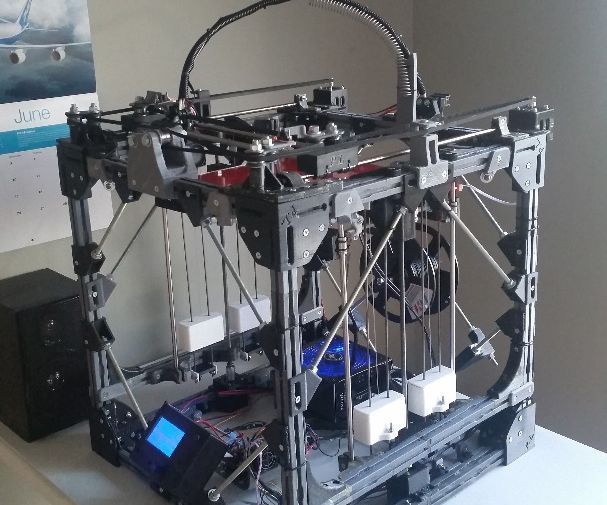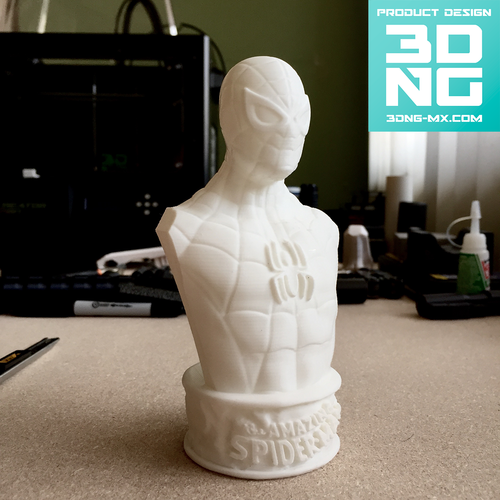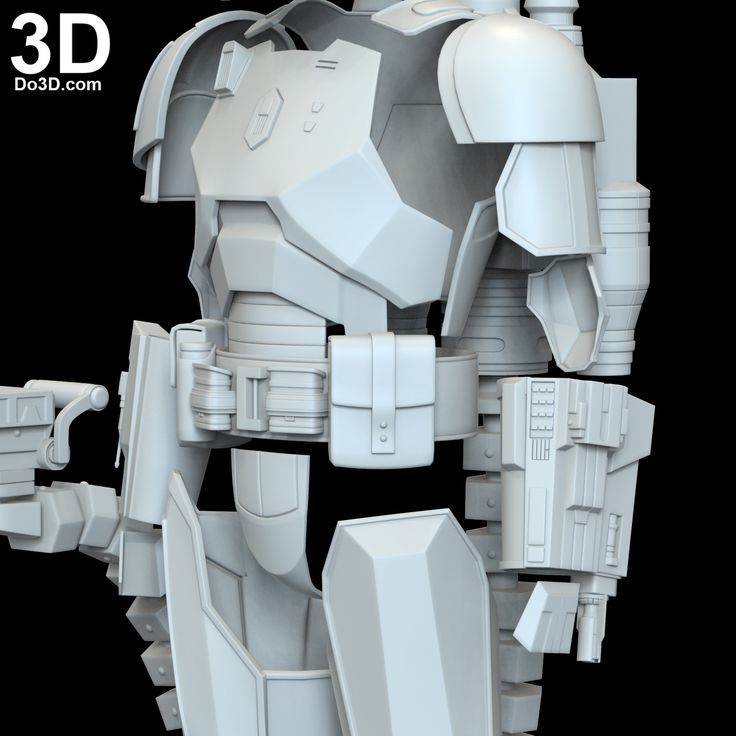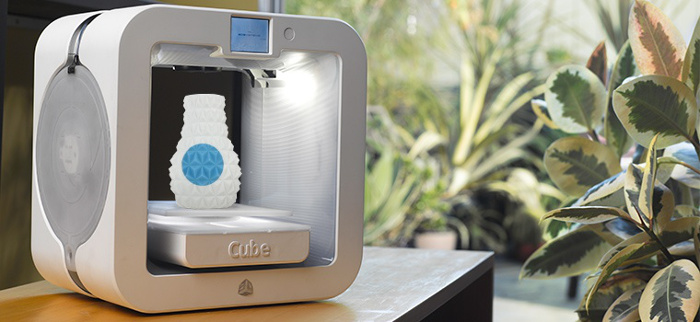7Tech 3d printer pen
7TECH 3D Printing Pen - 3D Pen Hub
- Description
- Additional information
- Accessories ????
- Videos
- Price History
- Price Alert ????
Popular mid-priced molten plastic pen supporting ABS and PLA plastics. Lots of good reviews, a few bad ones.
Controls:
- temperature (with display)
- speed (continuous slider)
(Might be a rebranded cheaper chinese version, but the 7Tech brand seems to provide good customer support, return policy, and quality control and actually tests the products before shipping them – hence the leftover “testing filament” you can find inside. )
- Brand: 7TECH
- Technology: Molten Plastic
- Filament size: 1.75 mm
- Filament type: ABS, PLA
- Display: YES
- Wireless: NO
Manufacturer’s detailed description:
√3D Printing Pen uses the latest developed technology in 3D printing. This technology FDM (fused deposition modeling) is adapted by leading 3D printers like Makerbot, 3D system, and Afinia.
√3D pen is a great tool for anyone interested in 3D creation – from the newbie to expert, The only limitation of 3D drawing is your imagination!
The 7TECH 3D Printing Pen(2nd Edition)Package includes following:
√ 1x Blue 3D Printing Pen
√ 1x 110-240V USA Power Adapter
√ 3x 1.75mm ABS or PLA Filament with random colors, 10 gram per loop
√ 1x Operation instruction manual
√ 1x Spatula to protect your finger from hot nozzle
Product Features:
√ Intelligence auto standby mode after 5 minutes idling
√ Nozzle diameter: 0. 7mm
7mm
√ Power input: 12V 3A
√ Heating temperature: 160 to 230 degree adjustable
√ With advanced thermal control, filaments jamming detection, and super silence design
√ The slender pen body suits hands use
√ The speed can be changed by single finger
√ Plastic heats up and then cools to a solid shape
√ A wonderful gift for creative children and adults
Safety and Warning Instruction
1. This 3d pen is suitable for children above 8 years old and adult; Children should use it under the guardian of adult.
2. The nozzle and surrounding area can reach a 230 degree high temperature; keep your bare hands away from the nozzle.
Notice:
Buy authentic 3D Pen in 7TECHMALL to enjoy one year premium asurance.,
Fraud pen from other sellers are not entitled to asurance; All 7TECH pen will gone thru strict QC and there will be testing filament inside pen body.
Side-note: It looks identical with the V2 model of the Scribbler family, and also with other pens priced in the $20 to $80 range (same casing design, probably different electronics inside though).
Accessories ????
Craft Case for Create , Soyan 3D Printing Pen , Samto 3D , 7TECH 3D , Scribbler 3D and Other 3D...
Craft Case for Create , Soyan 3D Printing Pen , Samto 3D , 7TECH 3D , Scribbler 3D and Other 3D...
$19.99
in stock
2 new from $19.99
as of December 19, 2022 4:22 am
Buy Now
Amazon.com
Mika3D 12 in 1 Bright Shine 3D Printer Silk PLA Filament Bundle, Most Popular Colors Pack, 1.75mm...
Mika3D 12 in 1 Bright Shine 3D Printer Silk PLA Filament Bundle, Most Popular Colors Pack, 1.75mm...
$149. 99
99
in stock
as of December 19, 2022 4:22 am
Buy Now
Amazon.com
Tecboss 3D Pen/3D Printer Filament, 1.75mm PLA Filament Pack of 20 Different...
Tecboss 3D Pen/3D Printer Filament, 1.75mm PLA Filament Pack of 20 Different...
$12.99
$14.99
out of stock
as of December 19, 2022 4:22 am
Buy Now
Amazon.com
TECBOSS 3D Pen Mat, 3D Printing Pen Pad Silicone Template with Bonus 3 Patterns Mat 2 Finger...
TECBOSS 3D Pen Mat, 3D Printing Pen Pad Silicone Template with Bonus 3 Patterns Mat 2 Finger...
$5.49
out of stock
3 new from $5.00
as of December 19, 2022 4:22 am
Buy Now
Amazon.com
7TECH 3D Pen Mat Silicone Design Mat with 280 Stencils eBook and 2 Silicone Finger Caps Great 3D...
7TECH 3D Pen Mat Silicone Design Mat with 280 Stencils eBook and 2 Silicone Finger Caps Great 3D. ..
..
out of stock
as of December 19, 2022 4:22 am
Buy Now
Amazon.com
Videos
Testing the 7Tech 3D Pen
In this review, I put the 7Tech 3D pen through it's paces, and build a funky planet. Get the 7Tech Pen here : http://bit.ly/7Tech4D Watch my newer video to find out ...
7TECH 3D Drawing Pen review #awesomepen #7tech4ddrawingpen
This is a review I did of the 7TECH 3D Drawing Pen.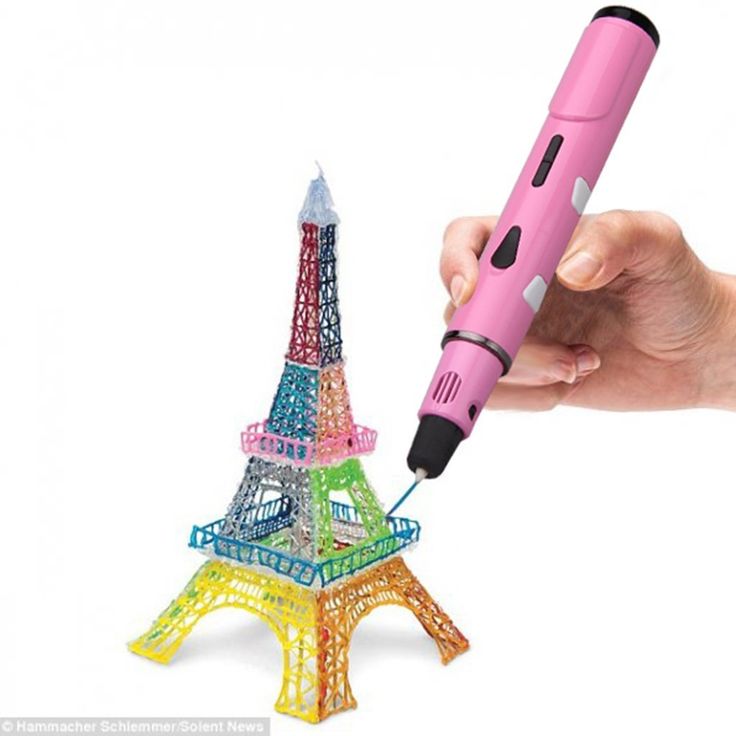 I received the pen at a discounted price to provide my unbiased opinion and review of the pen. I think it's ...
I received the pen at a discounted price to provide my unbiased opinion and review of the pen. I think it's ...
Price History
Price History for Craft Case for Create , Soyan 3D Printing Pen , Samto 3D , 7TECH 3D , Scribbler 3D and Other 3D...
Statistics
| Current Price | $19.99 | December 19, 2022 |
| Highest Price | $19.99 | October 16, 2022 |
| Lowest Price | $14.99 | December 4, 2022 |
Since October 16, 2022
Last price changes
| $19.99 | December 6, 2022 |
| $14.99 | December 4, 2022 |
| $19.99 | October 16, 2022 |
Price Alert ????
Create Your Free Price Drop Alert!
Set Alert for Craft Case for Create , Soyan 3D Printing Pen , Samto 3D , 7TECH 3D , Scribbler 3D and Other 3D.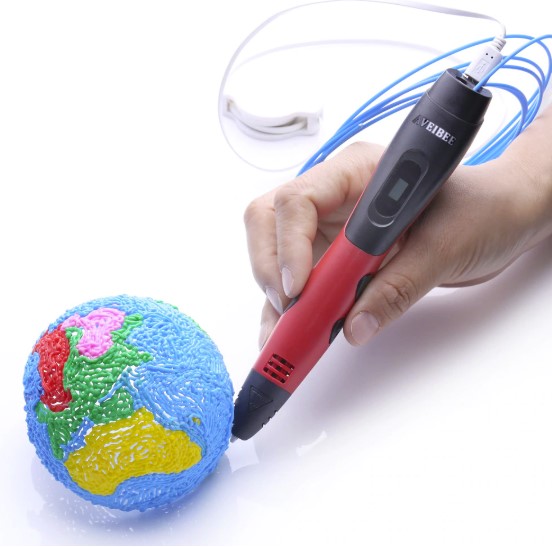 .. - $19.99
.. - $19.99
11 Best 3D Pens For All Ages in 2022 [Reviews]
A 3D pen is a tool associated with 3D printing processes and computer-aided design. That’s why they are sometimes called 3D printing pens or 3D painting pens. They are fun and functional for kids, hobbyists, and professional artists and designers.
In essence, a 3D pen allows you to draw out a 3D object, much like the extruder on a 3D printer but on a smaller scale and by hand. Obviously, this type of pen does not contain ink but a bulkier filament or other substance that quickly hardens. That said, a smaller range of pens use an ink and light mechanism.
Depending on the type, they come with a range of features, including:
- a mechanism for refilling the pen
- unloading the pen
- managing the speed of output
- temperature control for heating the filament
And more!
Uses for 3D pens are still somewhat limited and are mainly used for fun or by professional artists to make unique 3D artwork. They can also work as an excellent addition to 3D printing, allowing you to add elements and tweak things to a printed model by hand when the main object has cooled.
They can also work as an excellent addition to 3D printing, allowing you to add elements and tweak things to a printed model by hand when the main object has cooled.
Compared to a regular pen they are bulkier, more expensive, and often require USB to power and charge. Most do not come with software or even need to be paired with a computer or device of any kind.
How Do 3D Pens Work?There are two main types of 3D printing pen options. One has 3D systems more in common with an FDM 3D printer and is sometimes called a hot pen. You must buy and load the plastic-like filament or ‘strand’ into the pen and turn on its heating mechanism to get it to the right temperature to extrude out for ‘drawing’.
As soon as it leaves the pen, the regular room temperature will soon cool the filament into a solid, so you need to get the hang of it in order not to make a mess or ruin your design. Drawing will require a suitable bench, table, or surface so you don’t get plastic everywhere. Plain paper isn’t suitable because it’s too thin and light and will stick. A heavier paper-based surface can sometimes be effective. You can also use these pens directly on existing objects – ideally that have been 3D printed with similar material.
Plain paper isn’t suitable because it’s too thin and light and will stick. A heavier paper-based surface can sometimes be effective. You can also use these pens directly on existing objects – ideally that have been 3D printed with similar material.
They are almost always called a pen rather than a 3D pencil.
What most beginners start off doing is using 3D templates that you fill up with the pen’s material to create patterns. You can even create fully 3D objects as you join each part of the overall piece together.
The key thing to note is that most 3D pens work in thin air. By that we mean once you’ve drawn some kind of base structure, like a triangle, you can slowly raise the pen while extruding and create a solid upward line within the 3D space. The substance is thick enough and will harden enough that your structure won’t just fall over unless it’s poorly designed, to begin with.
The second kind of 3D pen is a cool pen or one that uses LED or UV exposure to solidify an ink without any noticeable heat. Kids’ 3D pens are more suitable for this technology as they tend to be easier to use and come with more elaborate colors and ink types like glitter and glow in the dark.
Kids’ 3D pens are more suitable for this technology as they tend to be easier to use and come with more elaborate colors and ink types like glitter and glow in the dark.
Choosing the best 3D pen comes down to your own requirements and what you plan to use it for. If you just want to have a bit of fun, you don’t need the most advanced or expensive product. If you’re into 3D printing, are an artist, or otherwise a professional, however, you’ll need a good performing option that matches your other equipment. Here are some of the main factors to consider:
PriceEveryone has an idea of how much they are willing to spend. Fortunately, the 3D pen price range does not vary that greatly. You can usually pick up a good pen for well under $100, while the most expensive rarely break the $150 mark - unless you include a lot of accessories. Still, as a general rule, the more expensive the better quality the product and end result of your 3D creations.
Before making your purchase, you need to decide what you’ll be using your 3D pen for. Is it just for a bit of fun or are you an artist trying to make a creative impression? Are you an individual hobbyist that already 3D prints and wants to add to this with a pen or are you in a team or larger business and need a bunch of functional pens for commercial reasons?
ErgonomicsThe best 3D pens aren’t just a thick cylinder with a nozzle. Creating good 3D objects takes time and you need something that fits your hand and doesn’t get uncomfortable during long sessions. In that sense, stay away from particularly heavy pens or ones that heat up to the point that you have to keep putting it down. Plastic is ok and often helps keep the pen lightweight but if there’s nothing extra to help with the grip it can make your hand sore.
In these cases, it’s best to read user reviews if you can test out the products in physical retail stores.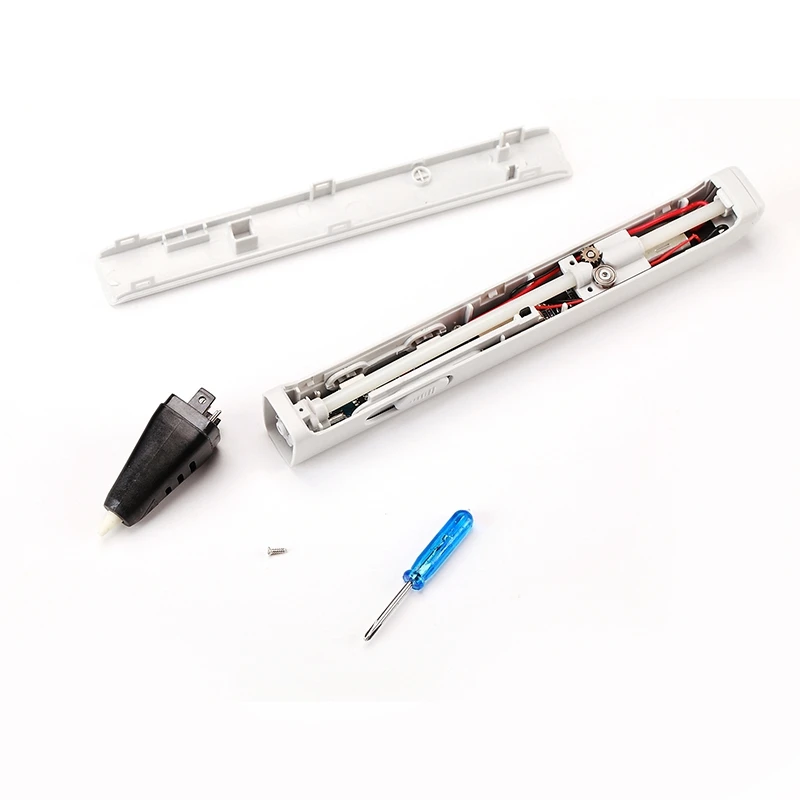
Not all pens are suitable for children because they heat up and the nib can be dangerous to touch. Filament is also messy and can be toxic if consumed. It's advised that children under 6 avoid 3D pens unless heavily supervised. Meanwhile, the best 3D pens for teenagers are typically just the best pens in general.
For children, the best option is to buy a 3D pen for kids that has low heat or is completely heatproof. These are not just aesthetically more appealing because of the bright colors and design but often come with kid-friendly stencils and projects to complete. Pens like the Mynt3D Junior 2 use a special low heat filament so a child cannot burn themselves. The CreoPop for kids uses an entirely different technology that doesn’t use heat at all and has many cool colors and inks that appeal to kids
CablesSome of the most powerful 3D pens require a permanent power supply from an outlet which means there will always be a cable. If you’re not a fan of the idea, look out for chargeable pens. Many are USB compatible and can be charged via an outlet with an adapter or by USB in a computer and laptop.
If you’re not a fan of the idea, look out for chargeable pens. Many are USB compatible and can be charged via an outlet with an adapter or by USB in a computer and laptop.
Being cable-free means you aren’t restricted in where you do your projects and there’s no risk of getting tangled in the cable and ruining your creations.
Heating and FilamentMost 3D pens are like FDM 3D printers that heat up a plastic filament and extrude it out, only via a pen nib. The best 3D printing pen is one that allows heating adjustments and lets you know the temperature.
The type of filament is also a consideration because it’s an added cost. The cheapest is PLA and certainly isn’t weak or poor quality but the strongest is ABS. It can offer the durability needed if creating commercial products.
Pens that don’t even use a traditional filament offer the most variety and don’t get hot. If that appeals to you, the biggest difference is they cost more.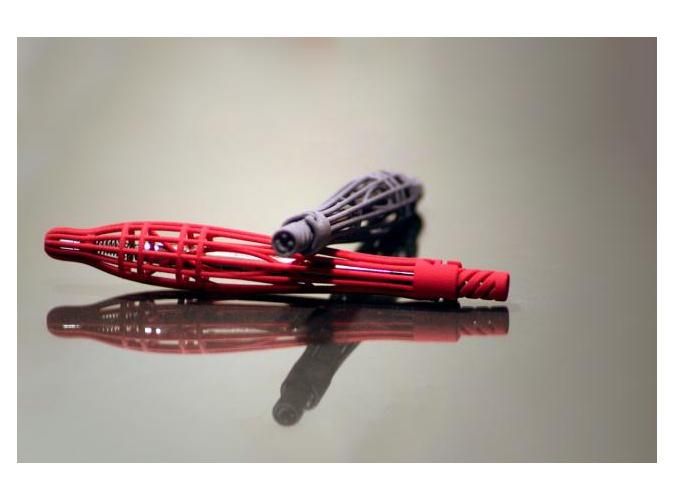
Our team tested the best 3D pens, so you don’t have to.
Whether you’re looking for what amounts to a handheld 3D printer or a more refined 3D art pen, we’ve got you. Our lists consist only of the top options on the market.
Best 3D Pens of 2017
The3D pen is not only an innovation or a fashionable trinket, but also a great tool that helps children (and adults, too) better understand 3D objects.
Today, 3D pens use two 3D printing technologies. FDM is short for "Fused Deposition Modeling". The same principle is used in many desktop 3D printers. In this case, molten plastic is fed from a heated nozzle. Most of the 3D pens below use this technology. nine0003
There is a second option - when a special ink, called "photopolymer", hardens under the influence of ultraviolet radiation. Liquid ink is fed through a nozzle and hardened under the influence of LEDs installed near the nozzle. This technology is especially safe for children as the nozzle stays cool.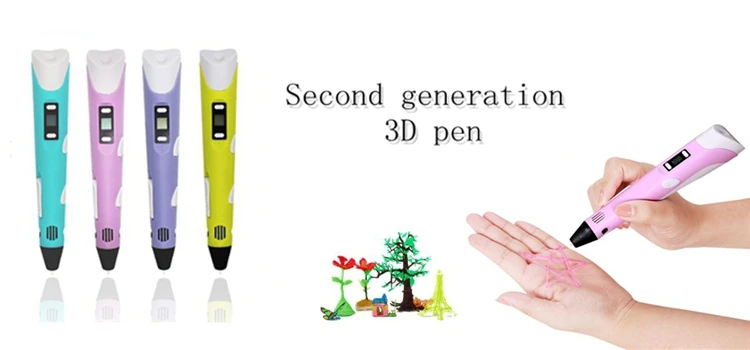
A superficial view of the same Amazon shows that there are already over 100 different models. You can look at Aliexpress and find 100 more. In general, there are plenty to choose from. Most are sold in the same price range. There are several premium models that cost more. nine0003
The article discusses the most popular models of 3D pens, their strengths and weaknesses. We hope this will help you choose a 3D pen for yourself.
The best 3D pens for kids
Let's take a look at the best 3D pens for kids first. In all these models, the nozzle is not heated, so that children do not burn their fingers. However, most instructions recommend that adults still supervise children while using the 3D pens.
Tech 4 Kids 3D Magic Imagi Pen ($20)
The main target audience of the Tech 4 Kids 3D Magic Imagi Pen is children. This device is safe to use because the nozzle does not heat up and no thermoplastic is used for printing. Instead of thermoplastic, a liquid polymer is used, which is sometimes referred to as "Cooled Ink".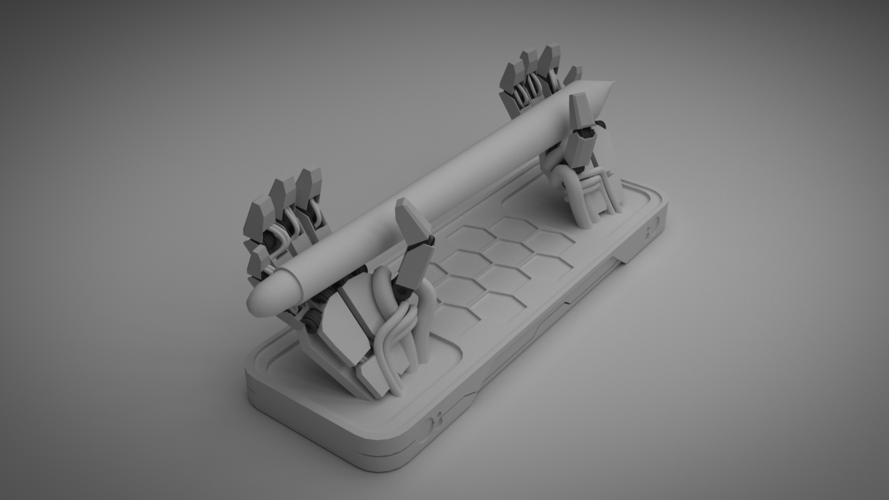 This polymer hardens when exposed to light. The curing process can be accelerated by using ultraviolet light. This allows you to print vertically.
This polymer hardens when exposed to light. The curing process can be accelerated by using ultraviolet light. This allows you to print vertically.
LEDs are installed at the end of the 3D pen, so that the material is exposed to ultraviolet radiation. This technology has another advantage. The LEDs can last a very long time on 3 normal AAA batteries (batteries not included). That is, unlike a heated nozzle, you are not tied to a power supply. nine0003
Features:
- For children (parental supervision recommended).
- Average price
- Uses photopolymer technology (UV light curing)
- Cordless
- Powered by 3 AAA batteries (not included)
- Average price: $20
IDO3D
Vertical (from 00016 $ IDO3D)
IDO3D Vertical is a range of 3D pens that use the same technology: the material hardens when exposed to ultraviolet light. The material is fed by manual pressing on the cartridge. The nozzle does not heat up.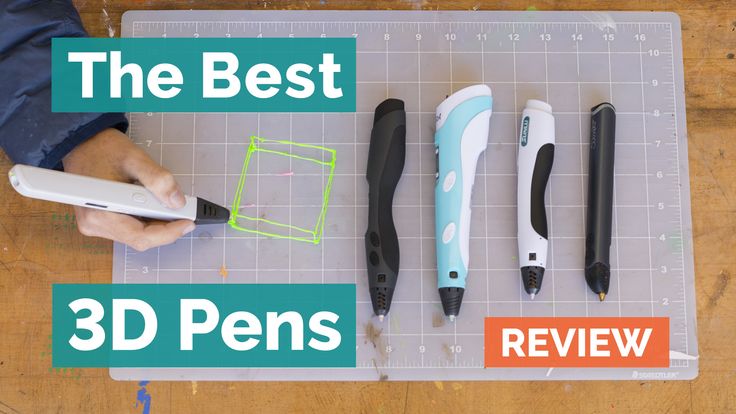 Comes with a removable UV light source. Cartridges in different colors. Their number depends on the selected product. nine0003
Comes with a removable UV light source. Cartridges in different colors. Their number depends on the selected product. nine0003
On the IDO3D website you can find free video tutorials and projects.
Features:
- for children (it is recommended to supervise parents)
- Available price
- Used technology of photopolymers (staining material under the influence of ultraviolet light)
- Cordless
- Average price: $ 10 - $ 27
CCTREEPER PENTER $19)
The CCTREE 3D 3D pen uses PCL, a low temperature, non-toxic material. The manufacturer claims that it can be printed at 40°C, meaning it can even be printed on leather (not recommended). At the same time, the CCTREE 3D 3D pen can print PLA and ABS plastics with higher temperatures. Due to the motor mounted on the side, the appearance of the handle is slightly unusual. nine0003
Features:
- for children (it is recommended to supervise parents)
- Available price
- Low print temperature, if the material PCL
- FDM technology (PCL, PLA, ABS)
- Average price: $ 19
ATMOSFLARE 3DLARE Drawing Pen ($24)
The AtmosFlare 3D pen uses photopolymer technology. The material hardens under the influence of ultraviolet radiation. There is no automatic material feed. The user must press the cartridge to feed the material. nine0003
The material hardens under the influence of ultraviolet radiation. There is no automatic material feed. The user must press the cartridge to feed the material. nine0003
Includes four nozzles, one AA battery, which lasts for four hours, two cartridges with printing material and the 3D pen itself.
The manufacturer recommends avoiding printing on surfaces that reflect light. Since ultraviolet light causes the material to cure, reflected light can cause the tip to clog. In addition, reflected ultraviolet light can cause damage to the eyes. So parental supervision is recommended.
Features:
- Child (Parental supervision recommended)
- Affordable price
- Uses photopolymer technology (UV light curing)
- Cordless
- Powered by AA batteries (last about 4 hours)
- Average price : $24
3Doodler Start ($69)
3Doodler Start costs $69 and is aimed at children over 8 years old. An important feature is that the company has developed a special degradable plastic that melts at lower temperatures than PLA or ABS. nine0003
nine0003
3Doodler did a great job with the ergonomics and simplicity of their product. One speed and one print temperature available. The micro USB port is used for charging. There is an LED indicator that shows the charge level and whether the extruder is hot. Button on / off.
On 3Doodler's website you can find over 200 projects that you can implement. The service can be used both to start working with a 3D pen and to further search for inspiration. In addition, 3Doodler Start is also sold as educational kits. nine0003
Features:
- Portable
- Easy to use
- Child friendly (warm, not hot tip)
- Uses FDM printing technology (special degradable material that melts at low temperatures)
- one button
- On/off button
- LED indicator
- One temperature setting
- Mains operation or built-in battery
- 1 minute warm up
- Average price: $69
CreoPop 3D Pen ($67)
CreoPop isn't the cheapest 3D pen - but it's safe for kids.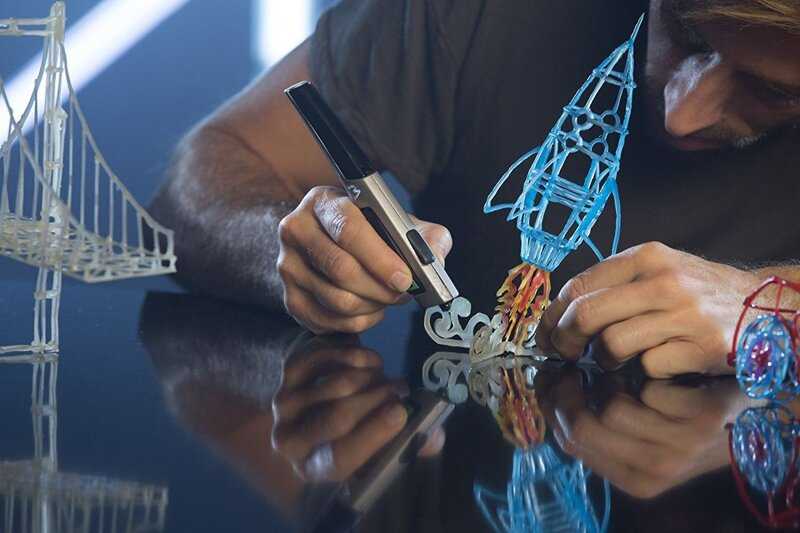 It has only one button, so it is very easy to use. Photopolymer technology is used for printing, so the tip does not heat up.
It has only one button, so it is very easy to use. Photopolymer technology is used for printing, so the tip does not heat up.
The company provides a wide range of materials for 3D printing - from materials with magnetic properties to glow in the dark and elastic. Since photopolymer printing technology is used, the 3D pen is portable. However, using popular PLA and ABS plastics will not work. nine0003
Features:
- Easy to use (only one button)
- Child safe (handpiece does not get hot)
- Valuable appearance
- Cordless
- Built-in USB rechargeable battery Uses a large selection of photopolymer printing materials:
- technology 90 for printing (conductive, glow in the dark, etc.)
- Average price: $67
Polyes Q1 3D Pen ($80)
The Polyes Q1 3D pen prints using photopolymers. There is a special fuse for children. If it is active, when the handle angle becomes greater than a certain one, the LED will turn off to avoid potential eye damage. nine0003
nine0003
Materials used for 3D printing do not produce any harmful fumes. Given that the tip doesn't get hot and the LED auto-off feature is included, this is a good, child-safe 3D pen. Naturally, printing with materials such as PLA or ABS will not work.
Features:
- Child-safe (no heat tip)
- Easy to use
- Includes UV eye protector
- Cordless
- Built-in USB rechargeable battery
- Uses photopolymer technology: materials of different colors and different physical properties
- Speed control button
- Average price: $80
Top hobby 3D pens 9003D Pengent16 Manve and Intelligent16 Manve
clones (from $20)
The Manve Intelligent 3D pen is almost identical in design to the 7Tech. The only difference is that the Manve model does not have an LCD screen. Two buttons on the body are designed to feed and load the material. The slider on the other side allows you to adjust the material feed speed.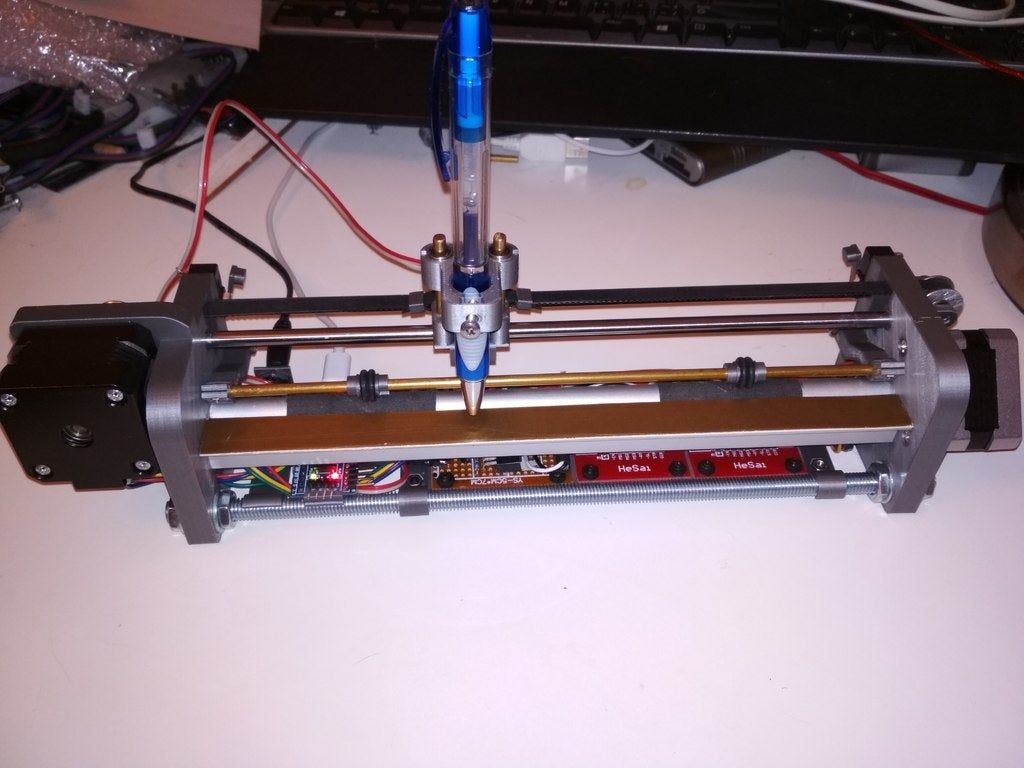 There are also two LEDs. The first shows if there is material, and the second shows if the device is active. There is a mechanism that puts the device into standby mode after 5 minutes of inactivity. nine0003
There are also two LEDs. The first shows if there is material, and the second shows if the device is active. There is a mechanism that puts the device into standby mode after 5 minutes of inactivity. nine0003
Features:
- Very quiet
- Easy to use
- Not suitable for children (tip hot)
- Uses FDM technology (PLA and ABS plastics)
- Includes speed control
- whether a 3D pen is used
- Automatic standby after 5 minutes
- Average cost of Manve Intelligent 3D pen and its clones $20 – $53
MXtechnic 3D Printer Pen ($30)
MXtechnic 3D Printer Pen is a standard 3D pen. It is possible to adjust the temperature and speed, as well as select the print material. You can use a power bank to power the pen. The LCD monitor displays the current state of the 3D pen.
Features:
- Easy to use
- Not suitable for children (hot tip)
- Uses FDM 3D printing technology (PLA and ABS plastics)
- Plastic feed button
- LCD screen
- Average cost of MXtechnic 3D Printer Pen: $30 indicator light.
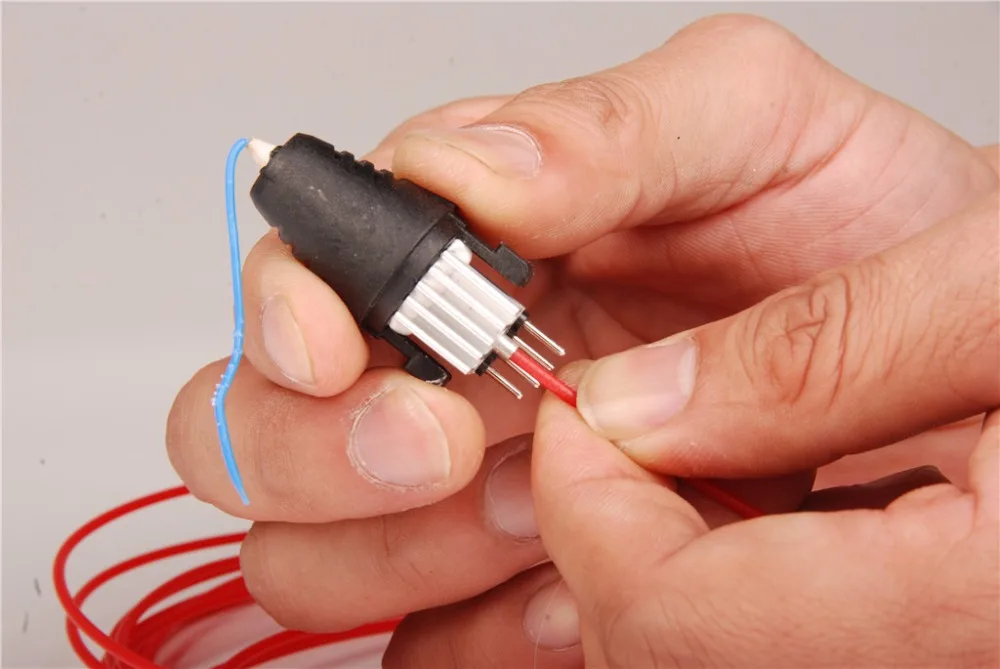 Can print PLA and ABS plastic, easy to operate: only two buttons - fast and slow plastic feeding.
Can print PLA and ABS plastic, easy to operate: only two buttons - fast and slow plastic feeding. Features:
- Easy to use
- Not suitable for children (hot tip)
- Uses FDM technology (PLA and ABS plastics)
- Fast and slow plastic feed buttons
- Indicator light
- Average price of Print-Rite CoLiDo 3D Pen: $31
Laimeng 3D Printing pen ($36)
- Laimeng 3D Pringint Pen looks like a regular 3D pen. It is not easy to find its technical characteristics, but judging by the appearance, the device has a feed button and temperature settings buttons. In addition, there is an LCD screen. nine0003
Features:
- It is easy to use
- not suitable for children (hot tip)
- Used FDM technology 3D print
- buttons for filing material
- LCD screen
- Average cost $ 36
Bilila 3D PRENTING ($ 39 )
Bilila 3D is a stylish gadget that has no special features.
 Is that the ability to print PLA and ABS plastics. There are 4 print speeds. Charged from USB. You can use Power Bank if you need portability. nine0003
Is that the ability to print PLA and ABS plastics. There are 4 print speeds. Charged from USB. You can use Power Bank if you need portability. nine0003 Features:
- Beginner friendly
- Stylish design
- Easy to use
- Not suitable for children (hot tip)
- Uses FDM printing technology (PLA and ABS materials) 909028
- Future 900 9 Former 3D Printer Pen and Copies (from $40)
The Future Former 3D Printer Pen is available in various colors. There is a feed button and a power button. You can print with PLA and ABS plastics. In addition to basic functions, the pen goes into sleep mode after 5-10 minutes of inactivity. All this, plus an ergonomic design, will allow you to concentrate on creativity, rather than mastering the gadget. nine0003
Features:
- Beginner friendly
- Ergonomic design
- Easy to use
- Not suitable for children (hot tip)
- ABS plastics)
- Speed control knobs
- Different materials used for 3D printing
- Average price of Future Former and copies: $40 – $60
Scribbler 3D Pen ($40)
This 3D pen is a standard good option.
 It has an LCD screen, temperature setting and material feed buttons. There are feed rate adjustment buttons and an automatic sleep mode mechanism.
It has an LCD screen, temperature setting and material feed buttons. There are feed rate adjustment buttons and an automatic sleep mode mechanism. Features:
- Suitable for beginners
- Easy to use
- Not suitable for children (hot tip)
- Uses FDM 3D printing technology (PLA and ABS plastics)
- Auto-sleep mechanism
- LCD screen
- Adjustable speed
- Average price: $40
Da Vinci 3D Pen ($40)
XYZprinting is known for its 3D desktop printers. They recently introduced a portable 3D printing gadget called “Da Vinci 3D pen”. There are only two buttons on the 3D pen - for feeding and loading material and a small LED that shows if there is material for printing. The device has a very simple design. You can print with PLA plastic. The company provides 11 different colors of plastic. However, PLA plastic from any other manufacturer with a suitable diameter will probably work. nine0003
Features:
- Lightweight
- Easy to use
- Not suitable for children (nozzle gets hot)
- Uses FDM printing technology (PLA plastic)
- Mains powered (batteries not included)
- Material buttons Average price: $40.
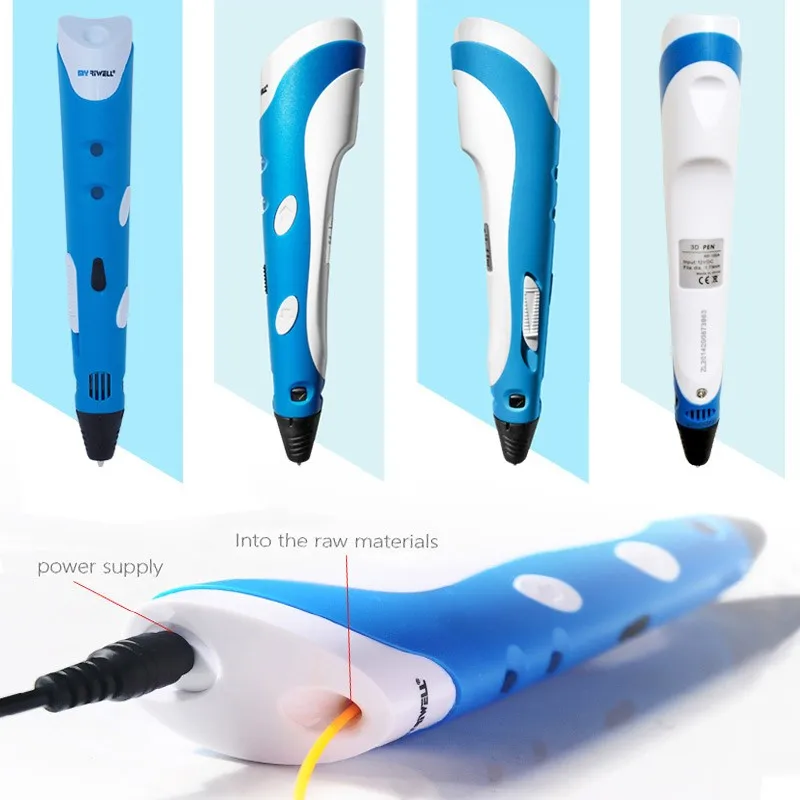 It is possible to adjust the temperature in 1° increments and adjust the material feed rate. However, this model only prints PLA plastic. The OLED display shows the material feed rate and its temperature. nine0003
It is possible to adjust the temperature in 1° increments and adjust the material feed rate. However, this model only prints PLA plastic. The OLED display shows the material feed rate and its temperature. nine0003 Features:
- Metal body
- Temperature adjustable in 1° steps
- Easy to use
- Not suitable for children (hot tip)
- Uses FDM 3D printing technology (9PLA plastic)
- Built-in LED display Ability to control print speed
- Average price: $50
Lay3r 3D Drawing Pen ($52)
The Lay3r 3D Drawing Pen is the most simple model. There are two buttons on the body - for loading and for supplying material. The 3D pen comes with a power supply and ABS plastic. To prevent the potential problem of high heat, a cooler is provided on the handle. nine0003
Features:
- The minimalist design
- is easy to use
- not suitable for children (hot tip)
- Used FDM 3D printing technology (PLA and ABS plastic)
- installed cooler
- Average price: $ 52
NRADGET Intelligent 3D Printing Pen ($32)
The NexGadget Intelligent 3D 3D pen has a very ergonomic design.
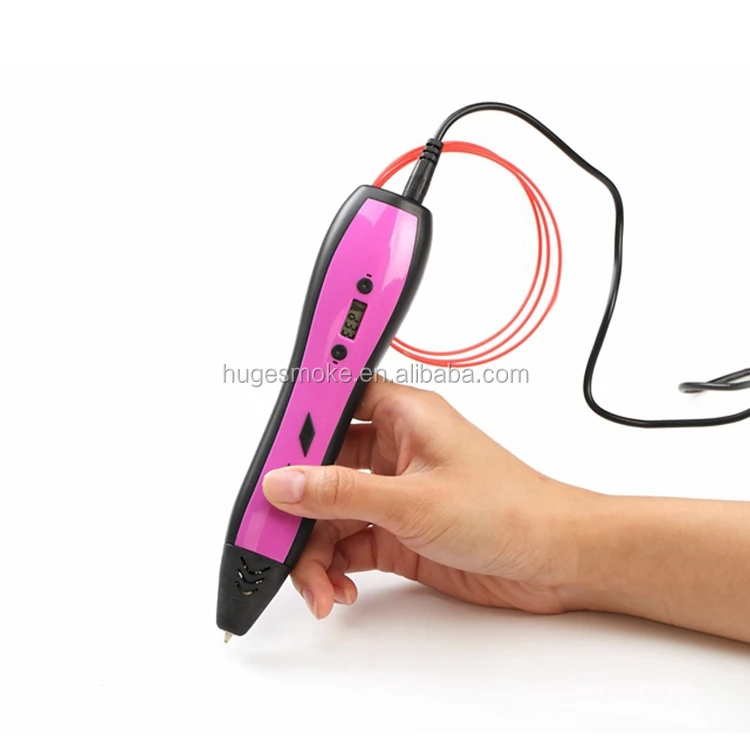 The LCD display shows the current state of the handle. The built-in LCD screen displays information about the type of material used, temperature and material feed rate. The manufacturer claims such a feature as "smart control" (smart control), but in fact it is quite a standard automatic material feed mechanism at the touch of a button. It is possible to adjust the feed rate - 6 different speeds are provided. The 3D pen goes into sleep mode after one minute of non-use. nine0003
The LCD display shows the current state of the handle. The built-in LCD screen displays information about the type of material used, temperature and material feed rate. The manufacturer claims such a feature as "smart control" (smart control), but in fact it is quite a standard automatic material feed mechanism at the touch of a button. It is possible to adjust the feed rate - 6 different speeds are provided. The 3D pen goes into sleep mode after one minute of non-use. nine0003 Features:
- Easy to use
- Not suitable for children (hot tip)
- Uses FDM 3D printing technology (PLA and ABS)
- LCD screen shows temperature, speed and media type
- Automatic material feed system
- Speed adjustment buttons
- Auto sleep system
- NexGadget Intelligent 3D Printing Pen and copies average price: $32
DIKI IV Intelligent 3D Printing Pen (from $40)
DIKI IV Intelligent 3D Printing Pen is unique in that all control is concentrated in one button.
 The first press starts heating the nozzle. When the built-in LED turns green, the pen is ready for 3D printing. Press the button again and the feed will begin. Another press stops printing. This model is powered by a USB cable. That is, you can use Power Bank.
The first press starts heating the nozzle. When the built-in LED turns green, the pen is ready for 3D printing. Press the button again and the feed will begin. Another press stops printing. This model is powered by a USB cable. That is, you can use Power Bank. Features:
- Easy to use
- Not suitable for children (hot tip)
- Uses FDM 3D printing technology (PLA plastic)
- One button operation
- Average price of DIKI IV Intelligent 3D Printing Pen and copies: $40 - $60
- Easy to use
- Not suitable for children (hot tip)
- Uses FDM 3D printing technology (PLA and ABS plastics)
- Has a speed slider
- Medium Has a standby mechanism
- Homecube Stereo 3D Drawing Pen and clones price: $30 – $67
- Easy to use
- Not suitable for children (hot tip)
- Uses FDM 3D printing technology (PLA and ABS plastics)
- Feed rate adjustable
- Automatic sleep mode
- by USB cable
- Market value of Dewang X4 3D Pen and clones: $60
- Easy to use
- Not suitable for children (hot tip)
- Uses FDM 3D printing technology (PLA plastic)
- Adjustable speed
- Material automatically stops feeding after 3 minutes of inactivity
- Average8 cost
- : $70
- Improved version of the “original” 3Doodler 9 pen0028
- Quality, stable 3D printing
- Easy to use
- Not suitable for children (hot tip)
- Uses FDM 3D printing technology (PLA and ABS plastics)
- Large selection of optional accessories
- Average market value: $98 9002 The best 3D professional pens
HATCHBOX 3D Printing Pen & clones (from $30)
HATCHBOX 3D Printing Pen is made of plastic. As a result, it weighs only 50 grams. The replaceable tip is made of ceramic. Can print PLA and ABS plastics. The printing temperature and material are configurable. The selected settings are displayed on the OLED screen, making the use of this 3D pen simple and intuitive. The extruder has 6 feed speeds. This is a simple but high-quality model that will help to realize any of your ideas. nine0003
Features:
- Very light (50g)
- Easy to use
- Not suitable for children (hot tip)
- Temperature and material type displayed on LCD screen
- Uses FDM 3D printing technology (PLA and ABS plastics)
- Speed buttons included
- Temperature buttons included
- HATCHBOX and copies average price: $30 – $110
PACKGOUT 3D Printing Pen and copies (from $39)
PACKGOUT 3D Printing Pen prints PLA and ABS plastics.
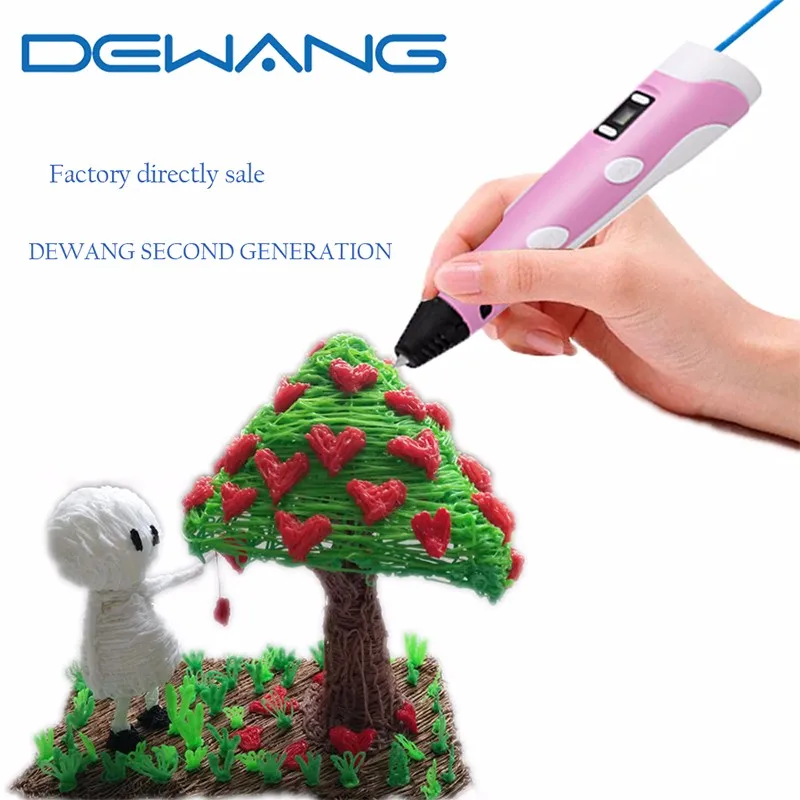 It is possible to adjust the temperature. In addition to standard features, this model has an interference detection system that prevents material from getting stuck in the nozzle. Another feature - the device is very quiet and goes into standby mode after 5 minutes of inactivity. All settings are displayed on the built-in LCD screen.
It is possible to adjust the temperature. In addition to standard features, this model has an interference detection system that prevents material from getting stuck in the nozzle. Another feature - the device is very quiet and goes into standby mode after 5 minutes of inactivity. All settings are displayed on the built-in LCD screen. Features:
- Very quiet operation
- Easy to use
- Not suitable for children (hot tip)
- One year warranty when purchased from official suppliers
- Uses FDM 3D printing technology (PLA and ABS plastics)
- LCD screen displays material, tip temperature and print speed
- Unclogging mechanism
- Filament jamming detection
- Feed speed slider
- Sleep mode after 5 minutes of inactivity
- Market value of PACKGOUT and copies: $39 – $80
MYNT3D Professional 3D Printing Pen and copies (from $50)
MYNT3D Professional 3D Printing Pen is a simple and easy to use 3D pen that uses FDM printing technology.
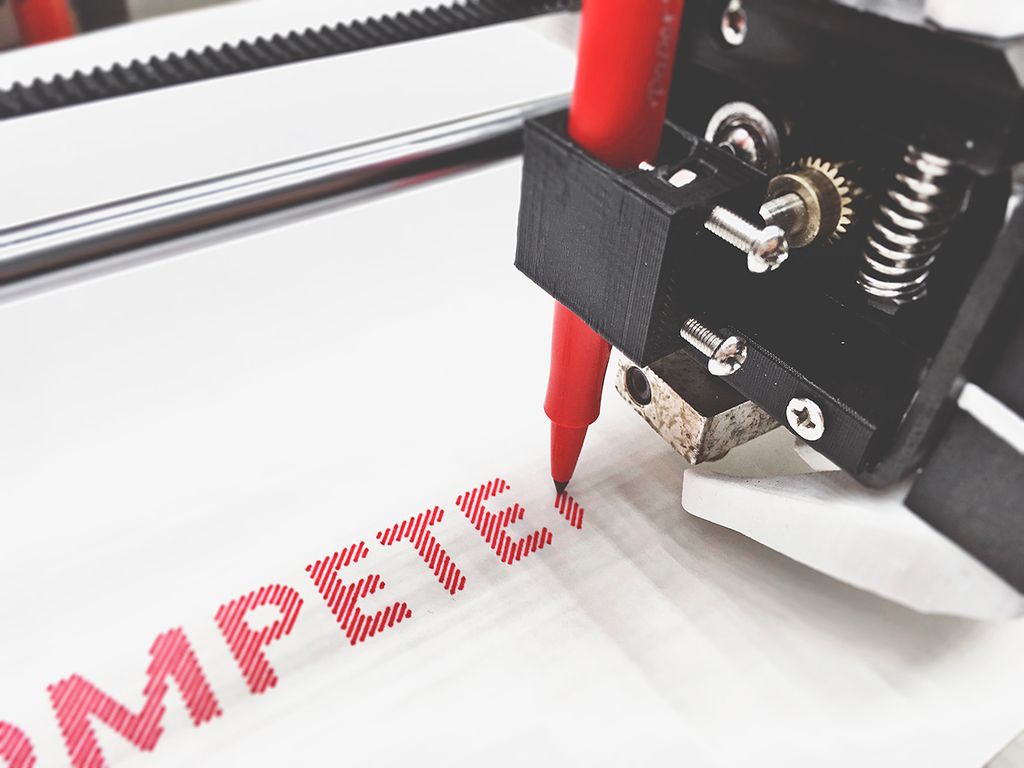 The OLED display shows the material used and the tip temperature. By the way, the temperature is adjustable in 1-degree increments between 130 and 240°C. The side slider allows the user to adjust the material feed speed. The other two buttons are responsible for the supply of material and its loading. Double pressing the feed button activates the automatic material feed mechanism. Removable tip. nine0003
The OLED display shows the material used and the tip temperature. By the way, the temperature is adjustable in 1-degree increments between 130 and 240°C. The side slider allows the user to adjust the material feed speed. The other two buttons are responsible for the supply of material and its loading. Double pressing the feed button activates the automatic material feed mechanism. Removable tip. nine0003 Features:
- Lightweight (40 g)
- Easy to use
- Not suitable for children (hot tip)
- Uses FDM printing technology (PLA and ABS plastics)
- Detachable nozzle
- Has a slider to adjust speed
- Buttons for material loading and feeding (including automatic feeding mode)
- Temperature setting in 1° increments between 130 and 240°C
- OLED screen displays material type and tip temperature
- Average price of MYNT3D and clones: $50 – $70
MorphPen Professional 3D Pen ($50)
MorphPen Professional 3D Pen is one of the representatives of "slim" (thin) 3D pens.
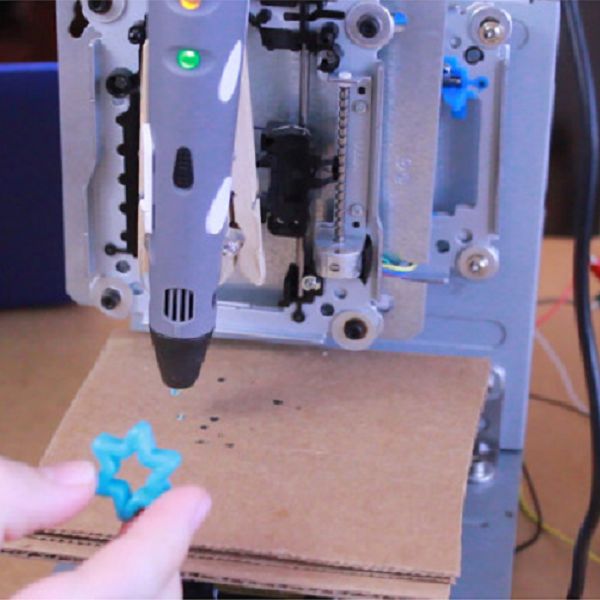 Very ergonomic and comfortable design. You can print with PLA or ABS plastics. There is one button for material supply and LCD screen. You can use the Power Bank for power. Of the additional useful "features" - a mechanism for automatically switching to sleep mode.
Very ergonomic and comfortable design. You can print with PLA or ABS plastics. There is one button for material supply and LCD screen. You can use the Power Bank for power. Of the additional useful "features" - a mechanism for automatically switching to sleep mode. Features:
- Easy to use
- Not suitable for children (hot tip)
- Uses FDM 3D printing technology (PLA and ABS plastics)
- LCD screen shows tip temperature
- Automatic standby
- Average price Pen: $50
Smarson 3D Printing Pen ($51)
Smarson 3D printing pen is another good one. There is an LCD screen that shows the current temperature of the handpiece. Next to the display there are buttons for adjusting the temperature. There are buttons to adjust the material feed speed. During heating, the red LED flashes. When the required temperature is reached, the blue LED will light up. This means that the pen is ready to print. The basic set includes the 3D pen itself, a power supply, a stand and PLA plastic in four different colors.
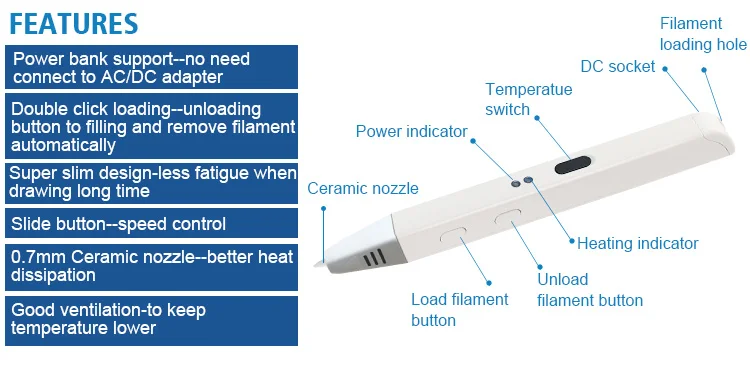 nine0003
nine0003 Features:
- Lightweight
- Easy to use
- Not suitable for children (hot tip)
- Uses FDM printing technology (PLA and ABS plastics)
- Adjustable speed
- Built-in red and blue LED is the 3D pen ready to use?0017
NEXTECH Intelligent 3D Printing Pen, uses FDM 3D printing technology. It can print PLA or ABS plastics and even materials with wood additives (Wood filament). Ergonomic, lightweight device. The manufacturer claims that the special design of the tip allows the material to cool faster. There are buttons to adjust the material feed speed. Temperature adjustment is provided. The temperature is displayed on the LCD screen. After one minute of inactivity, the device goes into standby mode. nine0003
Features:
- Quality assembly
- Ergonomic design
- Light
- It is easy to use
- (hot tip)
- FDM printing technology (PLA and ABS Plastic, Materials with Dereva)
- Media Feed and Load Buttons
- Speed Adjustment Buttons
- Built-in LCD Temperature Display
- NEXTECH Average Price and Copies: $71 – $89
Yingjia 3D Printing Pen ($96)
Yingjia 3D Printing Pen - Powered via USB cable.
 As in most of the pens presented above, there is an LCD screen that displays the current temperature of the tip. The temperature is adjusted in 1 degree increments. The buttons for setting the temperature are located next to the LCD screen. The material feed speed is adjustable. The 3D Pen enters standby mode after 5 minutes of inactivity.
As in most of the pens presented above, there is an LCD screen that displays the current temperature of the tip. The temperature is adjusted in 1 degree increments. The buttons for setting the temperature are located next to the LCD screen. The material feed speed is adjustable. The 3D Pen enters standby mode after 5 minutes of inactivity. Features:
- Very quiet
- Portable
- Easy to use
- Not suitable for children (hot tip)
- Used FDM 3D printing technology (PLA and ABS plastics)
- Feed speed adjustable
- temperature displayed
- Temperature adjustable in 1 degree increments
- Powered via USB cable
- Switching to standby mode after 5 minutes of inactivity
- Average price: $96
3Doodler PRO ($249)
3Doodler PRO is the top model from 3Doodler. The manufacturer has worked out the design of the nozzle and as a result this pen can print not only with standard materials like ABS and PLA plastics, but also with polycarbonate, nylon, materials with wood and metal additives.
 Nozzle sizes 0.5 mm, 1 mm and 1.5 mm. The shape of the hole is also different - there are square, triangular and round.
Nozzle sizes 0.5 mm, 1 mm and 1.5 mm. The shape of the hole is also different - there are square, triangular and round. Temperature and material feed speed are adjusted using knobs on the end of the 3D pen. The current temperature and material feed rate are displayed on the built-in LCD screen. There is a built-in cooler, the rotation speed of which is also adjustable. nine0003
In general, 3Doodler pro is a very high quality, thoughtful model that is really worth the money.
Features:
- Portable
- Easy to use
- Primary target audience - professionals
- Not suitable for children (hot tip)
- Uses FDM 3D printing technology (wide range of materials - PLA, nylon, metal0,2)
- LCD displays temperature and print speed
- Print temperature and print speed knobs
- Adjustable print speed
- Powered by AC adapter or batteries
- Average price: $249
LIX Pen ($149)
the world.
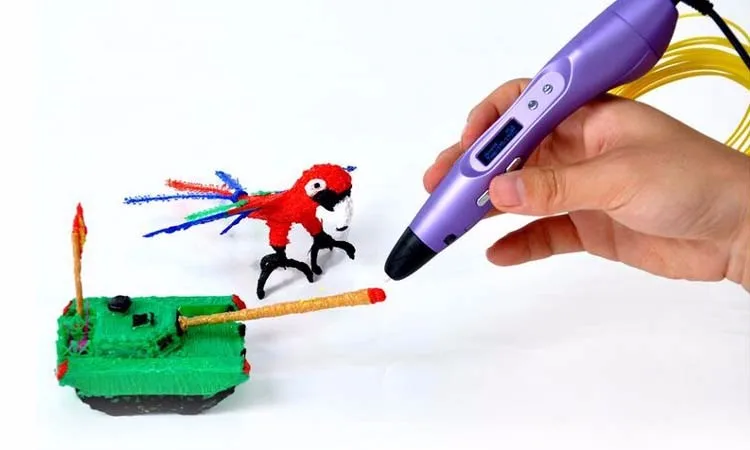 " This is a 3D pen that won the Design Intelligence Award and measures just 6.54 inches long with a 0.55 inch diameter. There are two buttons for adjusting the material feed speed. The kit comes with an external power supply, one pack of ABS plastics in different colors and one pack of PLA plastics in different colors. Based on the information on their website, shipping will take 2-3 weeks. Stores like Amazon don't have this model yet. nine0003
" This is a 3D pen that won the Design Intelligence Award and measures just 6.54 inches long with a 0.55 inch diameter. There are two buttons for adjusting the material feed speed. The kit comes with an external power supply, one pack of ABS plastics in different colors and one pack of PLA plastics in different colors. Based on the information on their website, shipping will take 2-3 weeks. Stores like Amazon don't have this model yet. nine0003 LIX 3D pen hit the market thanks to Kickstarter. 8.030 backers allowed to accumulate the amount of 731.690 £. This 3D pen is marketed as “a professional tool that is easy to use and will take your creativity to the next level.” But before buying, we recommend that you read the reviews on Kickstarter: it seems that not all buyers are happy...
Features:
- Portable
- Easy to use
- Interesting design and form factor
- Designed for professional use
- Not suitable for children (hot tip)
- Uses FDM printing technology (ABS and PLA)
- LED screen displays temperature and media feed speed
- Temperature control knob
- Average price: $149.
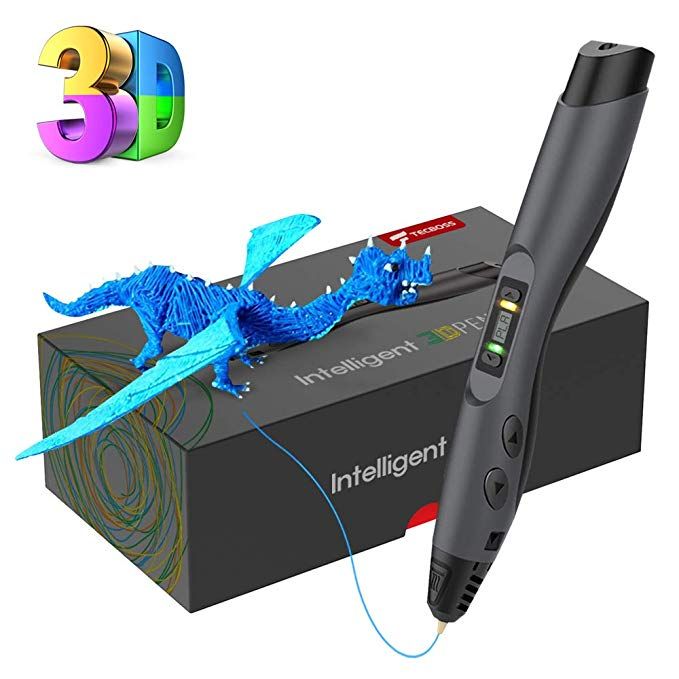 95
95
3Doodler Success Story: From Kickstarter to $20M in Revenue
Last spring, Forbes named WobbleWorks one of the 10 most successful projects launched on Kickstarter. At the time, she raised $3.9 for a 3D pen company.million on the crowdfunding platform in two campaigns for 3Doodler. Launched in 2013, the company generated about $20 million in sales last year. All revenue comes from three different lines of pens, and 3Doodler recently signed licensing deals with Cartoon Network and CBS to produce kits, Powerpuff Girls and Star Trek, respectively.
Similar to 3D printers, 3D pens allow users to easily create 3D objects. People will paint what they want, just with plastic instead of ink. nine0003
"Within a few months we will hit the million dollar mark. It's an amazing achievement after three and a half years of operation," says Daniel Cowen, a former attorney who is one of the company's three co-founders.
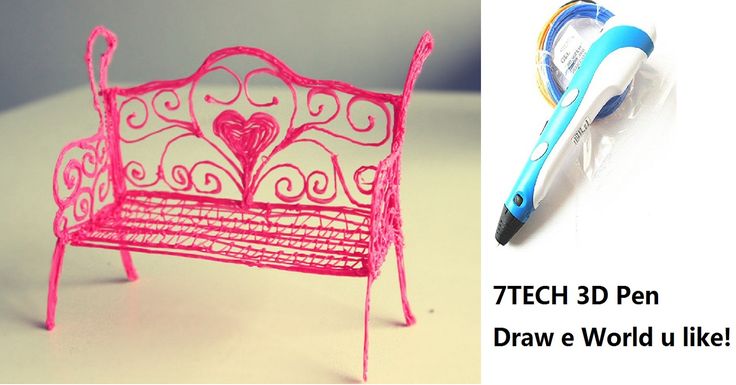 Even more surprising is that the rapidly growing company has 34 employees and offices in New York and Hong Kong, constantly avoids cash flows from investors and avoids debt.
Even more surprising is that the rapidly growing company has 34 employees and offices in New York and Hong Kong, constantly avoids cash flows from investors and avoids debt. As 3D printer technology has become mainstream, many companies have started using it. For the inventors of 3Doodler, Max Baugh and Peter Dilvworth, the idea of creating a 3D pen was a simpler and more intuitive idea. Initially, the idea was just a toy, but now it's a serious business. The home 3D printing market is expected to reach $2.35 billion by 2022, according to research firm Research and Markets. And today, the 3D pen business is booming. There are such companies on the market as Kuman, Mynt3d and 7TEch, as well as 3Doodler. "You can use our pen to create your own and quickly create what's in your mind," says Baugh. nine0003
Baugh, 35, and Dilworth, 51, previously worked in research and development for WowWee, a robot toy company based in Hong Kong. Dilworth also worked as a researcher at the Massachusetts Institute of Technology.
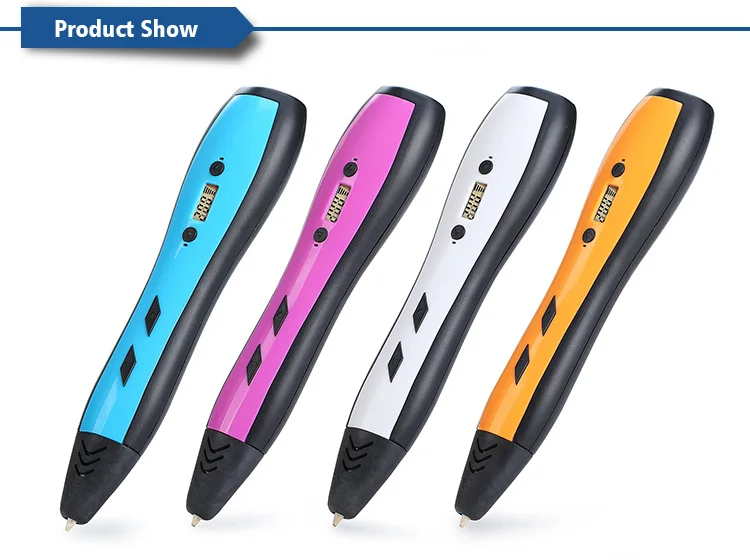 In 2010, they teamed up to form WoobleWorks, their own toy company that initially developed concepts for large toy companies. "When we entered the market with 3Doodler, we did a great job," says Baugh. nine0003
In 2010, they teamed up to form WoobleWorks, their own toy company that initially developed concepts for large toy companies. "When we entered the market with 3Doodler, we did a great job," says Baugh. nine0003
Like many other inventions, the 3Doodler idea was the cause of an accidental accident. Dilworth invented Trudy, a walking bipedal dinosaur, and he and Baugh worked on a new version of the toy. One day, they printed dinosaur legs for Trudy on a printer, and he made a mistake. Peter pushed me and said, "I want to be able to just take the nozzle from the printer and use it." Then we thought about it and said: “Why doesn’t this exist,” Baugh recalls. The friends then looked to see if anyone had created something similar before, but they didn't find anything. So they 3D printed some parts of the pen and signed the pen 3Doodler. "She worked terribly," Baugh says. But we thought it was cool. Then we went to the toy companies we had worked with before and asked if they were interested in our invention.
 They didn't seem to be happy. nine0003
They didn't seem to be happy. nine0003
Frightened, Baugh and Dilworth turned to Kickstarter, enlisting the support of Cowan, who eventually became the company's third co-founder. The world's first 3D printing pen raised a $2.3M investment from over 26,000 people, well above its original $30,000 goal. "It was an obvious big turning point as we went from two people making a few hundred dollars a year to a company that made $2 million online," Baugh recalls. nine0867 The second Kickstarter company, which was re-opened for 3Doodler 2.0 in 2015, has raised nearly $1.6M from over 10,000 investors. By going directly to the consumer, the inventors of 3Doodler were able to prove that there is demand for more than just retail to a narrow audience. Their product is popular.
Today, WobbleWorks has three different 3Doodler product lines.
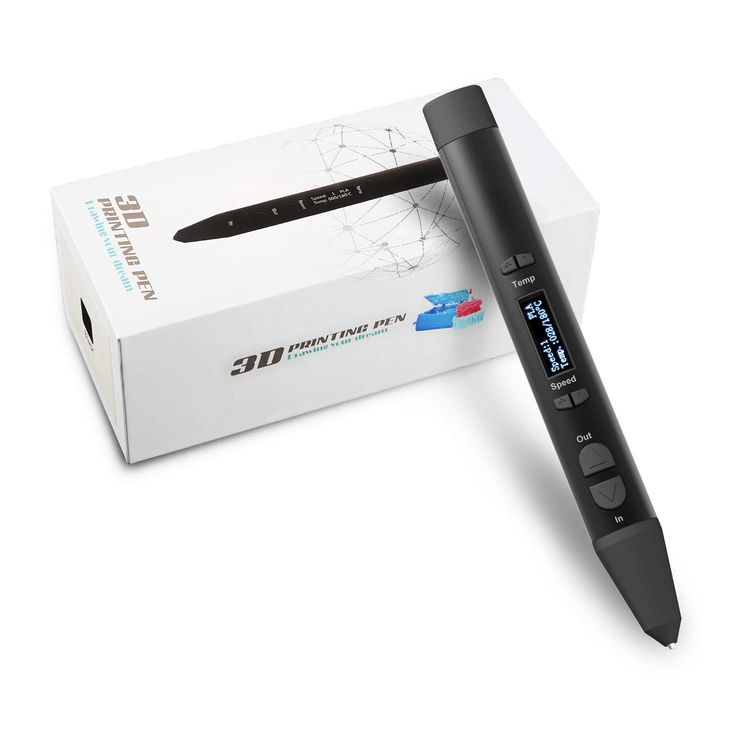
Learn more
Homecube 3D Stereo Drawing Pen (from $30)
Homecube 3D Stereo Drawing Pen is a lightweight 3D pen that fits comfortably in your hand. There is a slider for adjusting the feed rate. There is a safety mechanism - the pen goes into sleep mode after 5 minutes of inactivity. The nozzle is replaceable. There is no LCD screen on the pen, but there is an LED that indicates whether the pen is ready for use. nine0003
Features:
Dewang X4 Intelligent 3D Printing Pen ($60)
The Dewang X4 3D has a simple minimalist design.
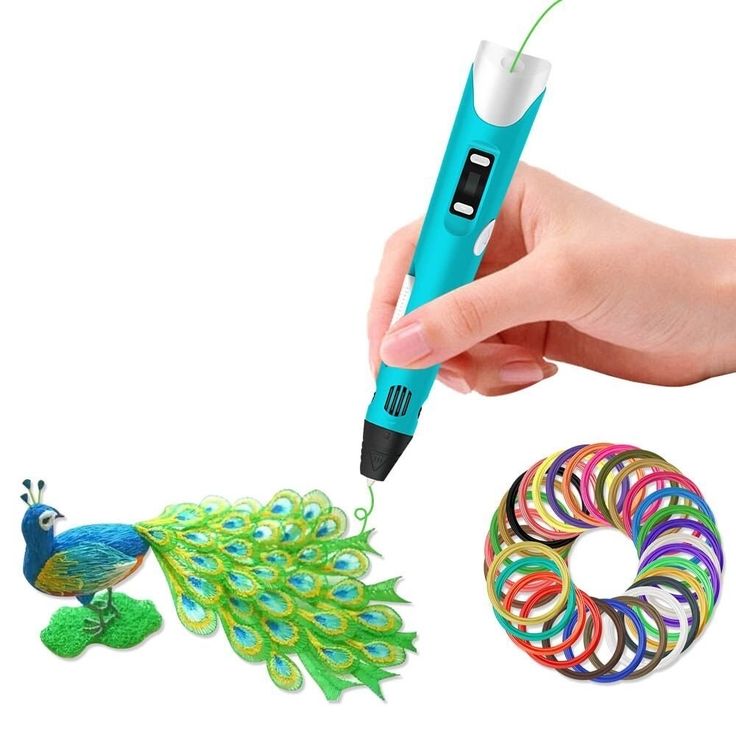 There is a built-in LCD display that shows the type of material being used. On the 3D pen there is a button to switch between ABS and PLA plastics and feed speed settings. It is designed to go into standby mode after 3 minutes of inactivity. Since the 3D Pen is powered by USB, you can use the Power Bank. nine0003
There is a built-in LCD display that shows the type of material being used. On the 3D pen there is a button to switch between ABS and PLA plastics and feed speed settings. It is designed to go into standby mode after 3 minutes of inactivity. Since the 3D Pen is powered by USB, you can use the Power Bank. nine0003 Features:
3D Driller 3D Printing Pen ($70)
3D Driller is another model on the market. There is a button on the handle to adjust the material feed speed. After 3 minutes of inactivity, the material will automatically stop feeding, which ensures the safety of use. A cooling system is provided, thanks to which the material hardens almost instantly. So creating vertical lines will not be a problem.
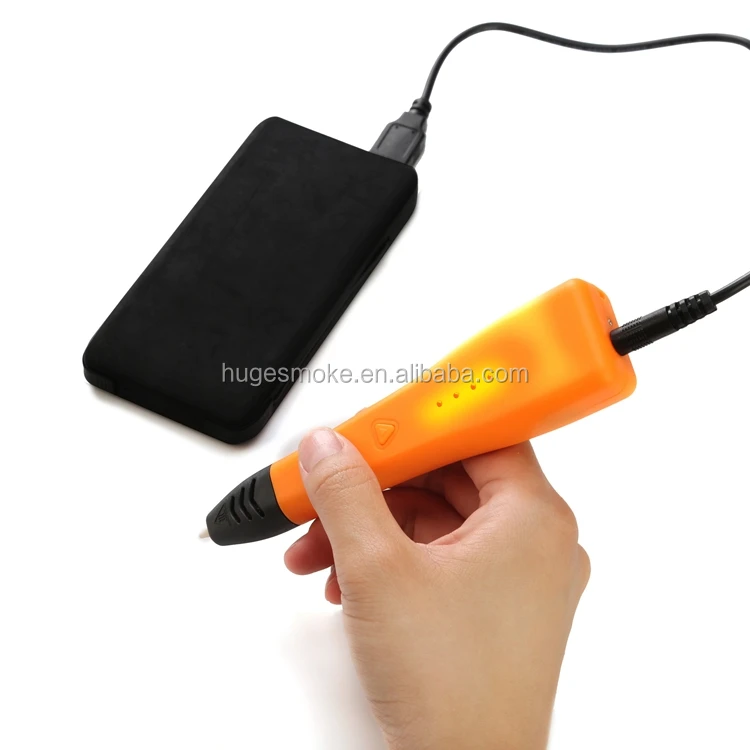 nine0003
nine0003 Features:
3Doodler Create (V 2.0) ($98)
This is a model from the manufacturer of the first 3D pen. 3Doodler Create (V 2.0) is an improved version of the first model - 3Doodler 3D. Simple and aesthetically pleasing design, aluminum housing. Simple, intuitive controls. There are two material feed rates and two temperature settings. nine0003
A wide range of optional accessories are available for this 3D pen. Among them: a set of interchangeable tips, a DoodlePad printing surface, a JetPack portable battery pack, a book with projects, a special foot pedal that allows you to unload your toes. In addition, 3Doodler provides a wide range of PLA and ABS colors. Sold special Create (V 2.
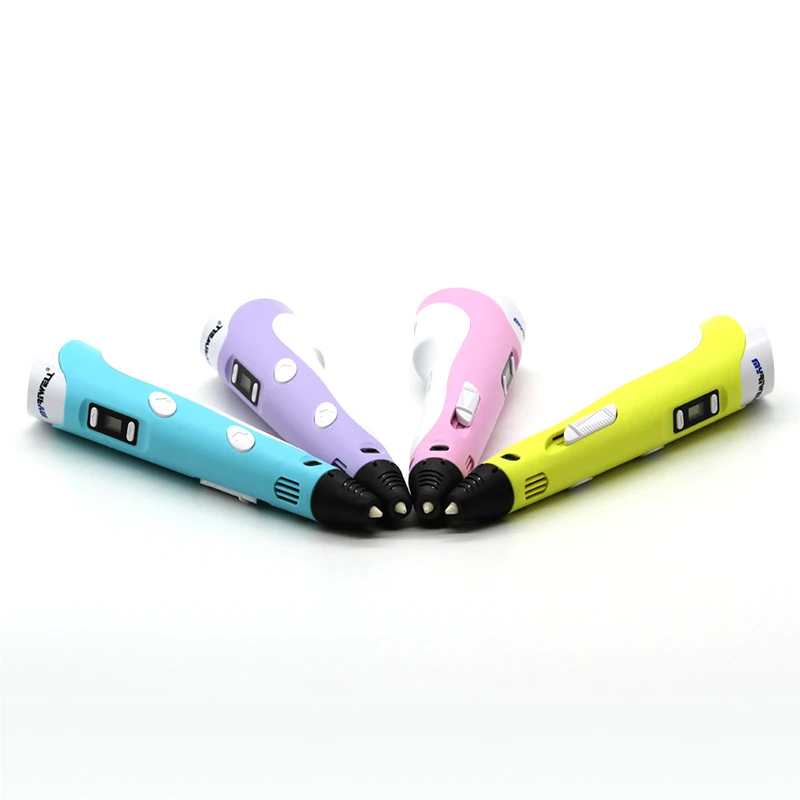 0) 3D pen bundles sets for educational purposes.
0) 3D pen bundles sets for educational purposes. Features:


